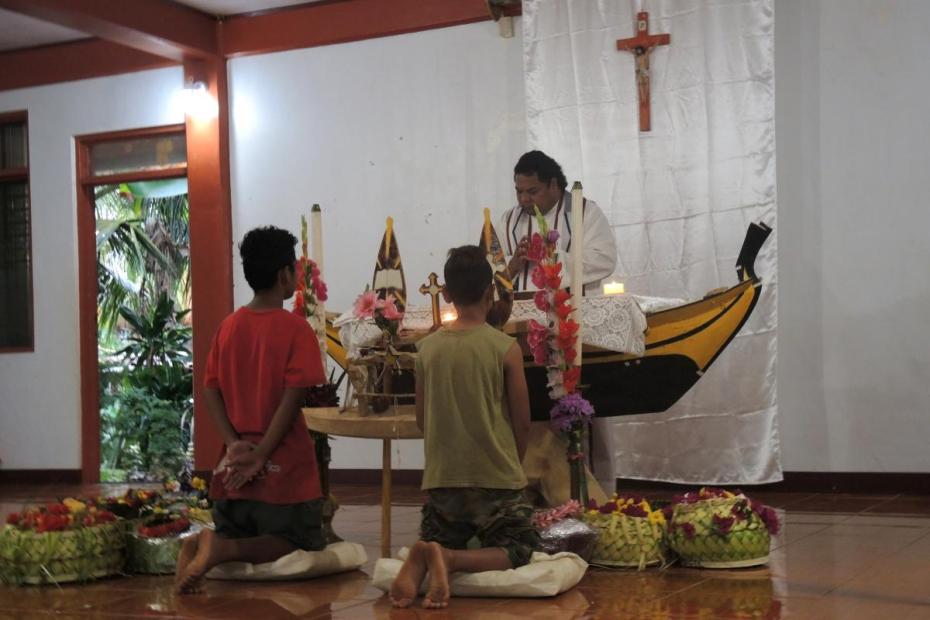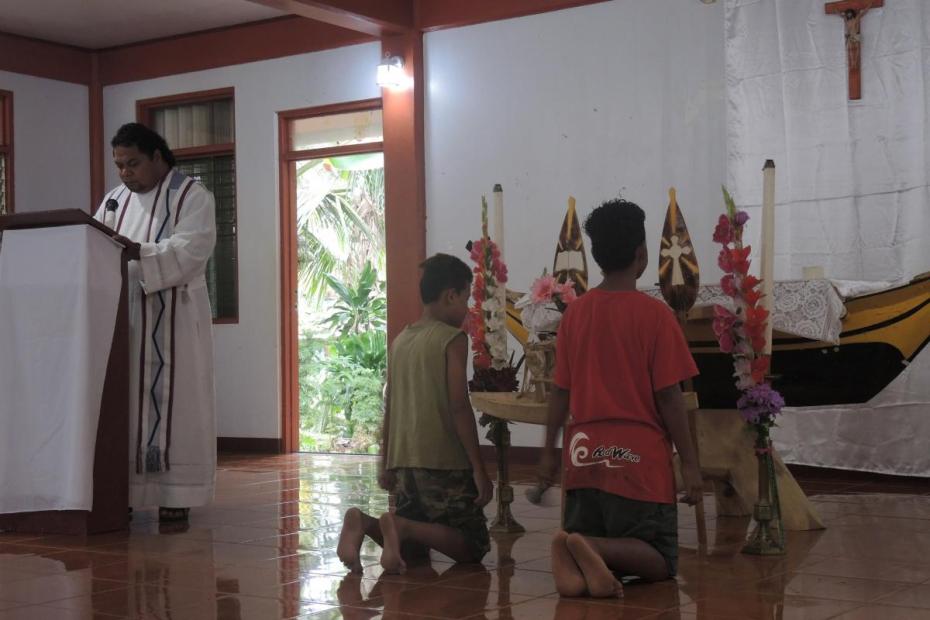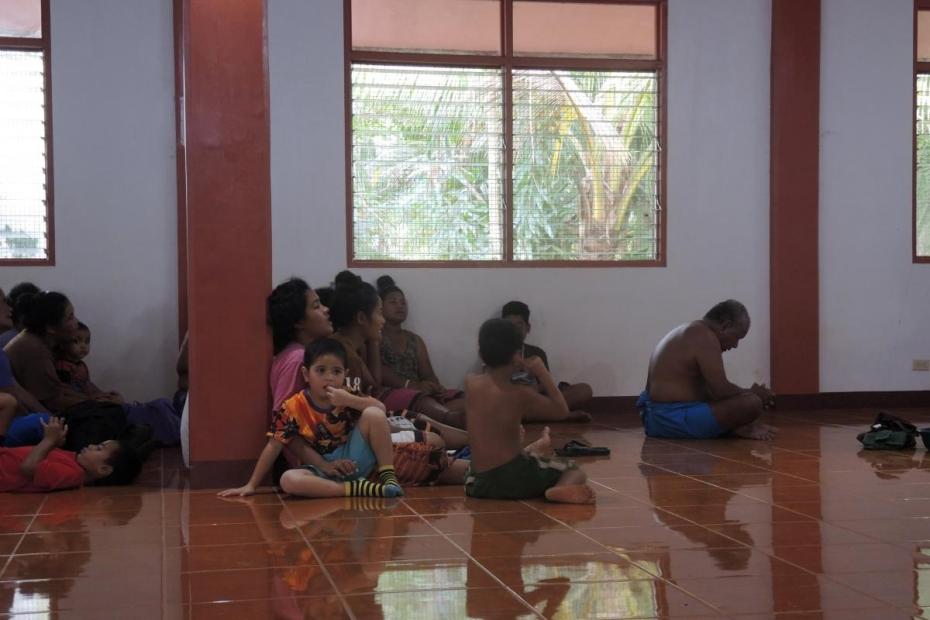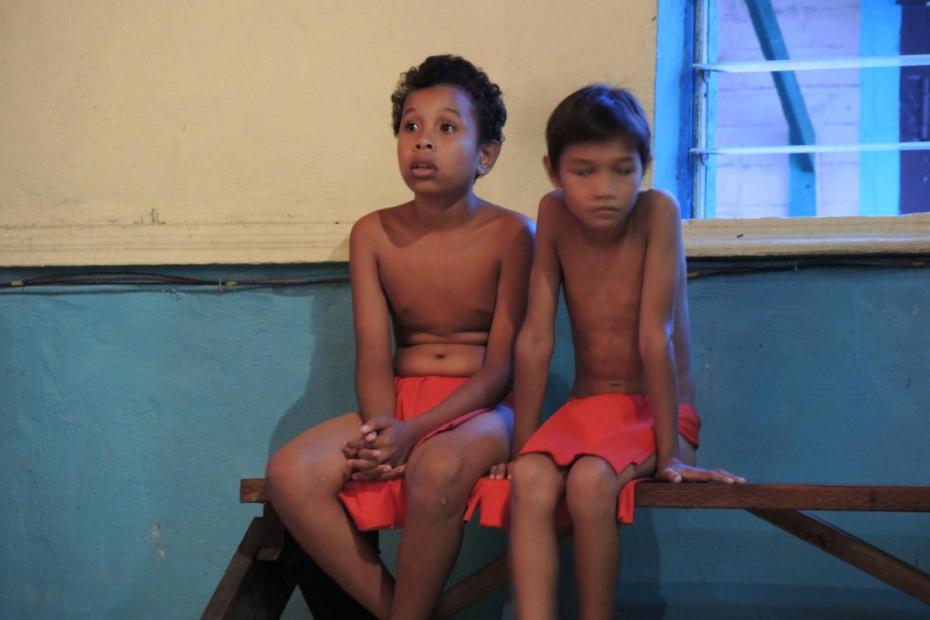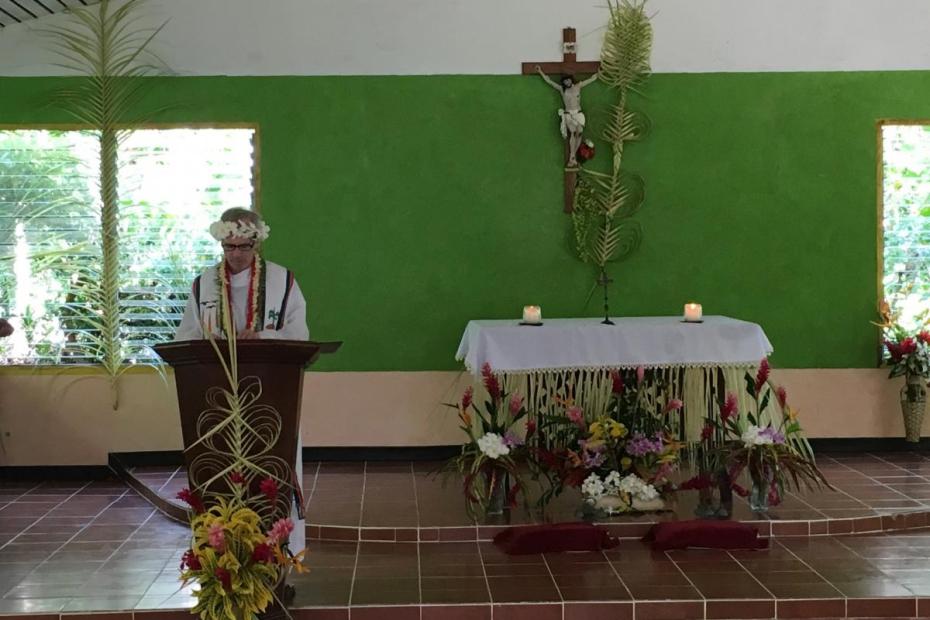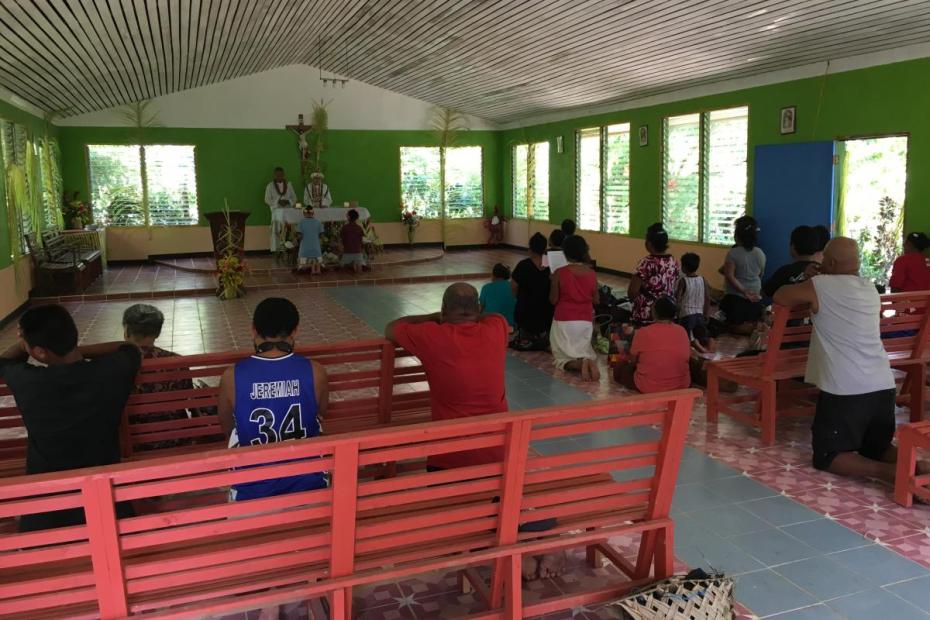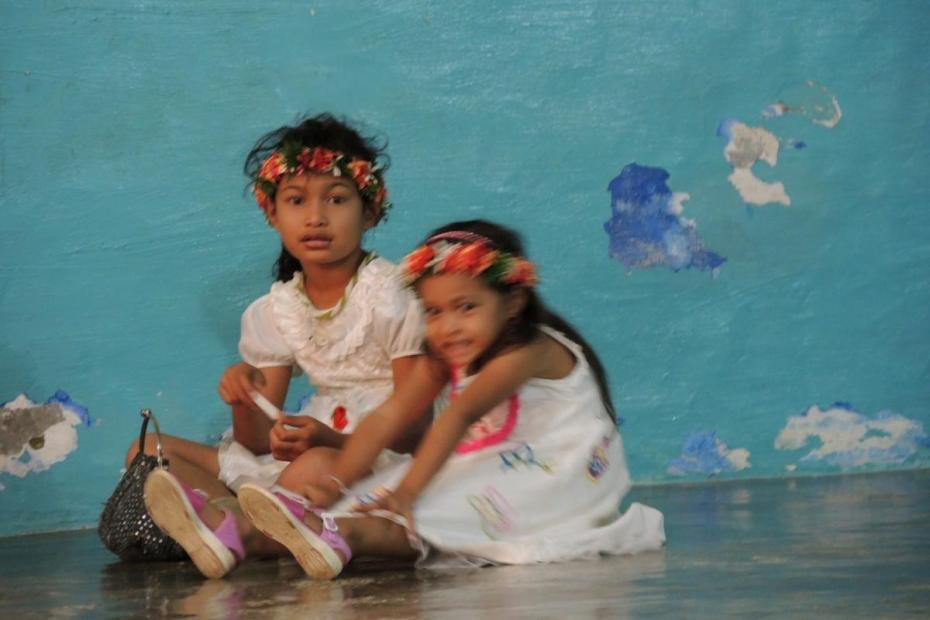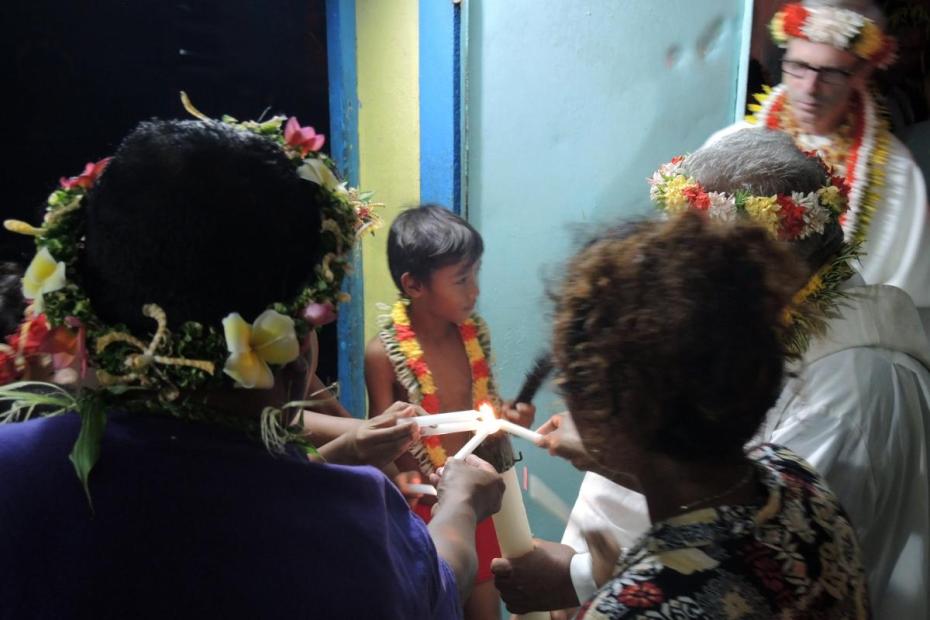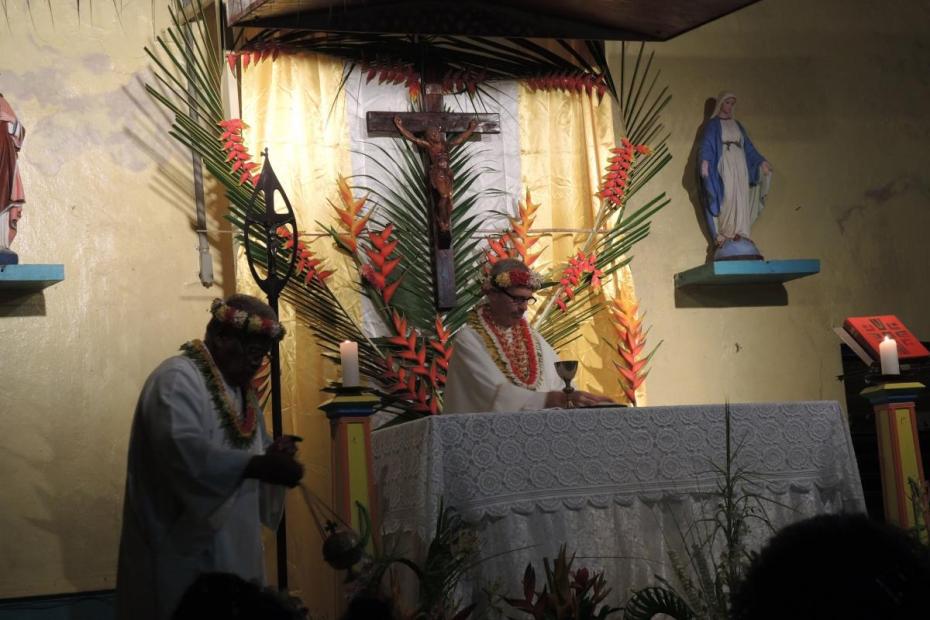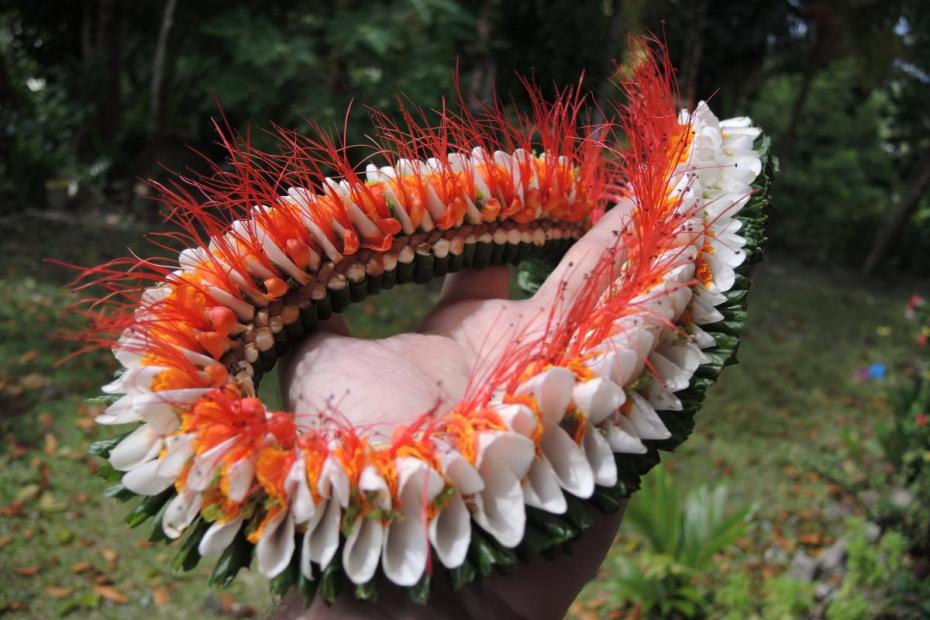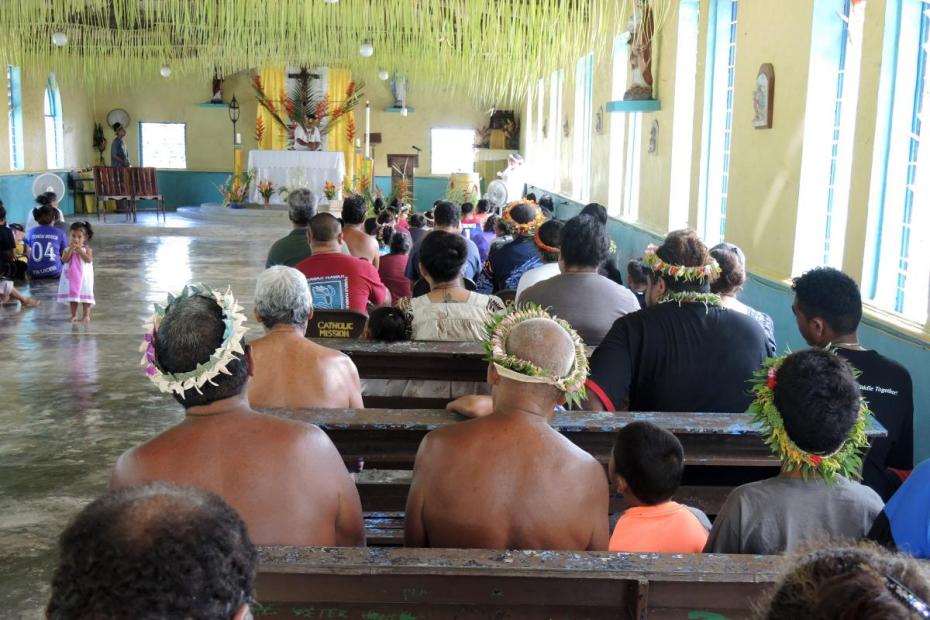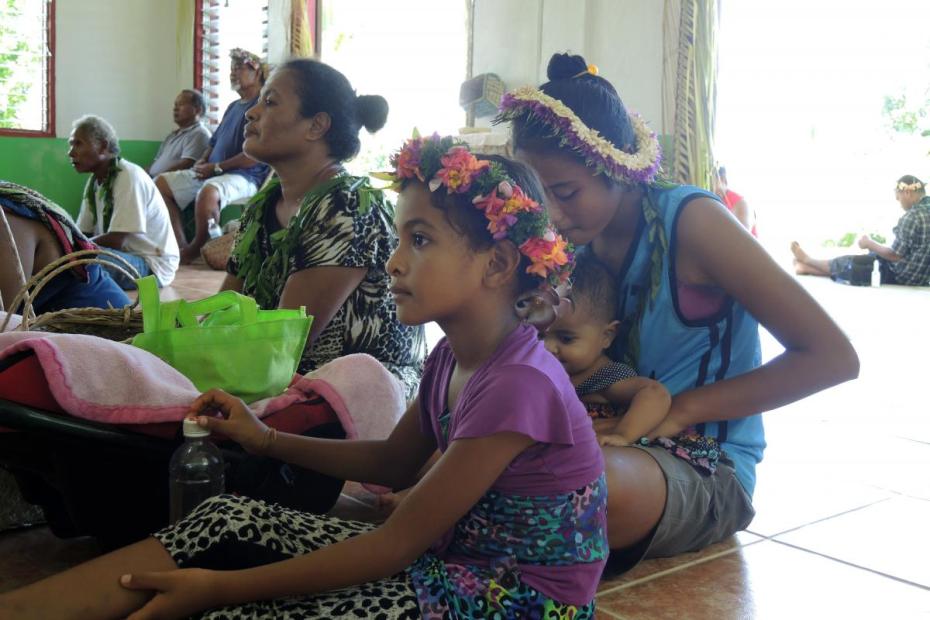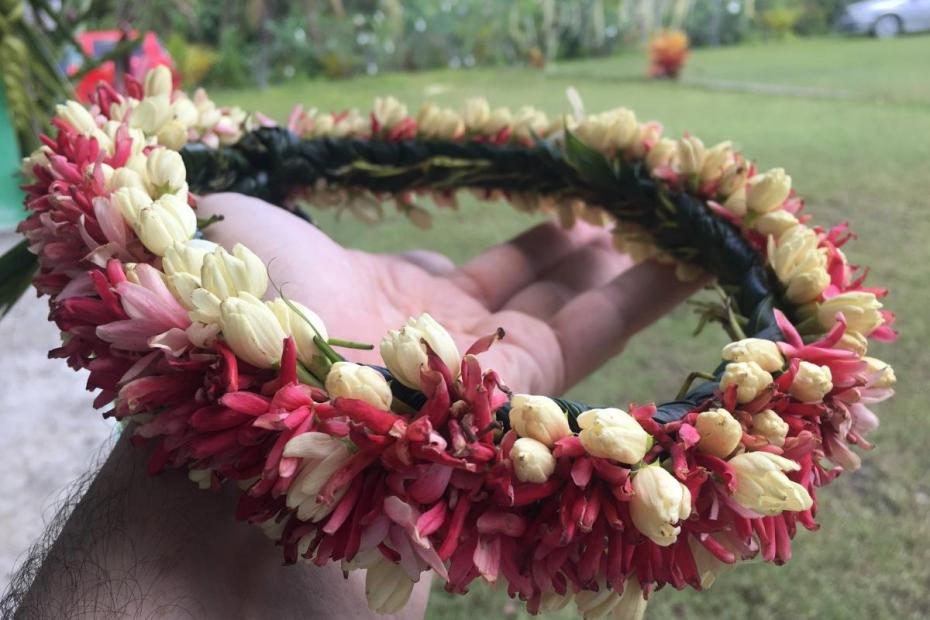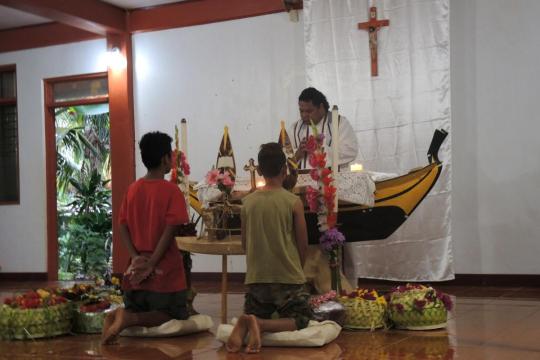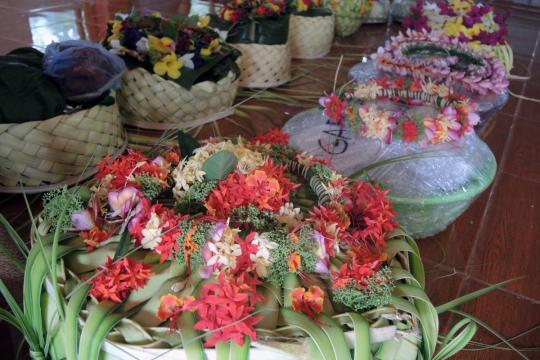During worship in the small, tight-knit communities of Yap, there are definitely no strangers. Worship is not a space to “build community” in response to a culture that undermines it, as can be the case in anonymous urban settings. People here pray alongside other worshippers who know them and where they fit in the hierarchies of the lineage and the community. In this particular cultural context, worshippers are keenly aware of their relationship to the whole of the congregation.
Because respect and restraint—some describe it as stoicism—are bedrock cultural values in Yap, lay people’s style of praying at liturgy, and the clergy’s style of preaching, presiding and ministering is highly restrained as well. “In Yap it is not good to show what you like or don’t like in public,” one woman interviewee explained. “You can share with family, but in public, don’t show, don’t let innermost feelings show. It belongs to you only.” Other Micronesians share that trait, she said, but no group expresses it as strongly a Yapese.1
In this cultural context, the posture of “authentic” and appropriate prayer looks different. Yapese abhor attempts to call attention to oneself, to stand out or above the rest of the crowd. Modesty and self-control are important. The style of Yapese liturgy is equally modest and self-controlled. For Yapese, standing is not a sign of respect or reverence. Neither is kneeling. Putting oneself low is a sign of respect, so sitting on the floor through Mass is the standard form of modesty and respect for many worshippers. There are benches in the back for those who prefer those, mostly elders, but they do not stand or kneel either. Strong displays of emotion or other displays of religious devotion is out of place and would be disdained as “show off” behavior.2 Devotion ought to be real, but should not be overly performed or outwardly shown. What in some cultures might be regarded as dull or not spirit-filled worship is most highly respected in Yap. Pentecostal-styled worship is a puzzle to the interviewees we talked to, something un-Yapese, though there have been Evangelical inroads in Yap, which the interviewees couldn’t quite countenance.
At worship, respect relations can complicate things in other ways, such as over who can give communion to whom (there are norms about who can feed who), or whether a man (even a priest) can kneel of the floor below a woman on a chair and wash her feet without causing offense.
Though the form of the liturgy does not change, there have been many efforts to adapt the exterior signs of it to Yapese culture. As the video shows, that includes altar boys and girls in traditional garb, the decoration of most churches with flowers and palms, and the design of the altar in one church using the form of a local fishing boat. The celebrants are typically adorned in flower nuunuw. Intricately woven with different freshly gathered flowers and leaves, the nuunuw serves as a way of welcoming another and showing love, not as a sign of status. Some nuunuw are worn around the neck, but most at church are worn on the head like a garland.
Not because of inculturation, but simply because of the structure of most people’s economic lives, the collections at Mass typically include at least as much value in fruits and fish as in cash.
- 1In contrast, she singled out Palauans, who, she thought, do show their feelings. (Palau, though not part of the Federated States of Micronesia, is traditionally a Micronesian culture).
- 2The doloolow, and the funeral ritual it derives from, would be the major exception to this rule. Still, an unexpected source of criticism from several interviewees who witnessed two doloolows and/or the Easter dances that we documented was the fear that some dancers might use it to “show off.”
